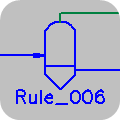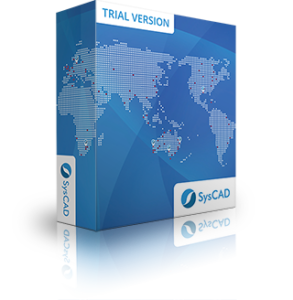Simulation is a critical exercise in process engineering for the design and operation of chemical and mineral processing plants. Process modelling allows engineers to study and understand the behaviour of their process under a range of conditions to optimise efficiency, maximise product value, and minimise environmental impact. However, creating an accurate and robust process model can be a daunting task – even small errors in a model can have a significant impact on results and lead to false conclusions and unnecessary rework. It is essential to follow best practices when building process models.
At SysCAD we have decades of experience in process modelling software development and the art of process simulation. In this article, we highlight our Seven Golden Rules of Process Modelling.
 1. Clearly Define your Scope and Objectives
1. Clearly Define your Scope and Objectives
Before starting any simulation, it is essential to define the scope and objectives of the model. This includes defining the design criteria, the input and output boundaries of the system, the required level of detail, and the key performance indicators (KPIs) that the model will be used to optimise. Defining these at the outset ensures that the model is fit-for-purpose and focused on the critical areas of the process to provide maximum value, while minimising over-engineering and scope creep.
 2. Gather Accurate and Reliable Data
2. Gather Accurate and Reliable Data
Ultimately, the accuracy of a process model depends on the quality of the data used to build it. Garbage in = garbage out. It is therefore essential to gather accurate and reliable data from various sources, including operational process data, process layout, setpoints and design specifications, laboratory test work, equipment datasheets, literature, and operational expertise. It is important to validate the data, understand and remove outliers, and consolidate or prioritise conflicting data.
 3. Choose the Right Simulation Tool
3. Choose the Right Simulation Tool
There are a wide range of modelling platforms available, each with their own strengths and weaknesses. Select the one that best fits your requirements. SysCAD provides a robust and flexible flowsheet-based toolkit for steady-state and dynamic modelling, supported by comprehensive documentation, software integration options, and a suite of industry-specific add-ons. Above all, it is critical that your engineering team is trained and competent in the selected software.
 4. Build with Purpose and a Plan
4. Build with Purpose and a Plan
Building a process model requires a structured approach. Start with a sketch, define a naming structure, add appropriate unit models and links, develop controllers, and build reports. Plan ahead for sensitivity analysis and validation – the model should respond to changes in inputs and conditions, it should not be a static snapshot. Flowsheet development is a great opportunity to bring together team members from different areas to share and capture knowledge and experience.
 5. Validate, Validate, Validate!
5. Validate, Validate, Validate!
Once the model is built, it is essential to tune and validate it. For operating models, compare results with actual plant data to ensure the model accurately represents the process. For design models, compare with lab data, similar processes, and expert opinion. Start with a validated base case, then run sensitivity analyses and different what-if scenarios, assessing the impact of input changes on model outputs. Stress test edge cases outside of the tuning range to understand model limitations and uncertainty. Process models are not static and should be continuously reviewed and updated.
 6. Document, Communicate and Educate
6. Document, Communicate and Educate
Documenting your model is essential to ensure it can be easily understood, maintained and updated. Documentation should be fully transparent and include the model’s objectives, scope, assumptions, simplifications, limitations, input data, and validation results. It is also useful to maintain a model change log. Communicate scenario results with engineers, operators and stakeholders to help them make informed decisions. The final model represents a rich repository of process knowledge – use this to your advantage for new staff training, education, and legacy management.
 7. Use the Model to Drive Action
7. Use the Model to Drive Action
The ultimate goal of process modelling is to drive action and improve process performance in design or operations. Leverage model scenario findings and sensitivity analysis results to drive real-world changes in operating conditions or control strategy. Involving stakeholders in the model building process helps ensure that the model accurately represents the process and that the results are actionable. It also helps build buy-in for the model and the resulting recommendations. This cycle can be repeated, with the model undergoing continuous improvement in scope, detail and accuracy.
Keep these golden rules in mind to create accurate and practical process models. By setting clear objectives, collecting reliable data, choosing the right tools, following a structured approach, validating rigorously, documenting and communicating, and using the model to drive actions, engineers can reliably optimise processes and make informed decisions in process design and operation.
It should be the responsibility of process simulation practitioners to develop quality models following best practices, and to educate management and colleagues about the benefits that process models can provide as well as the requirements to achieve, maintain and apply them.

